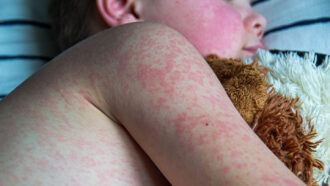Cool Jobs: Soaking in sweat
Some researchers collect human sweat to answer a host of science questions
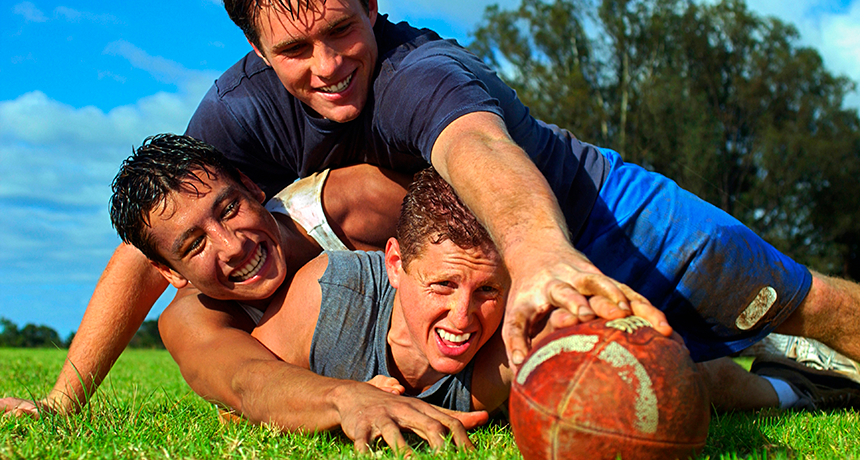
Sweating isn’t embarrassing, it’s a talent. It’s how the body cools itself. And humans are very, very good at it.
Dynamic Graphics Group/Getty Images
In the sticky, muggy heat of summer, it seems like every movement can make you sweat. As beads of salty water appear on your forehead and your shirt starts to stick to your back, you might run to find the nearest air-conditioned room.
But when Yana Kamberov’s three-year-old twins begin to sweat, she just smiles.
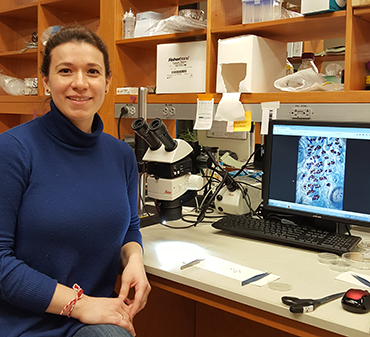
“I like sweat,” she explains. Kamberov works at the University of Pennsylvania in Philadelphia. As an evolutionary biologist, she studies how animals evolved over time. And when she sees her kids sweat, she knows that they are activating a trait humans evolved to keep from overheating. “You’re built for this,” she says. “The reason you don’t overheat and die is because your sweat glands activate to cool you off.”
To anyone trapped in a crowded space filled with stinking, sweaty people, Kamberov’s enthusiasm might seem a bit bizarre. But she’s not alone. Sweat fascinates scientists the world over.
Some, such as Kamberov, want to know where we got our sweaty skin. Others are trying to put our natural stank to good use. They’re out to track your health — and even catch a killer or two.
Sticking up for sweat
Kamberov didn’t always have such an appreciation for perspiration. As a teen, she wanted to be an archaeologist — someone who studies human history. “I’ve always liked history,” she explains. “I like to know where things come from.” But when she took a class on archeology in college, the shine wore off. “I didn’t want to chip stone in a desert somewhere,” she says. “It’s just not me.”
Instead, Kamberov realized she was fascinated with the history of humans as a species. She wanted to combine her love of biology (studying living things) with anthropology (the study of human culture). Her ultimate goal was to find out how humans as a species came to be.
Part of what makes our species what it is today, she soon realized, is how people look. “We stick out like a sore thumb among primates,” she says. Humans are often called the naked ape. Even the hairiest people lack the thick mat of fur seen on apes such as chimpanzees and gorillas. We have hair, and plenty of it. But the strands are thin. That leaves our skin exposed — and covered in sweat glands.
Three types of glands dot our skin. They release secretions onto the surface. Sebaceous (Seh-BAY-shuhs) glands appear mostly on our face and scalp. They put out oily chemicals that moisturize the skin and hair. They also help waterproof the skin. A type of sweat glands known as apocrine (APP-oh-kreen) cover our armpits and genital regions. These glands secrete a thick substance full of fats. Bacteria feed on those fats, at the same time producing the smell we lovingly call body odor.
But eccrine (EK-kreen) glands dominate most of our skin’s real estate. They produce the watery, salty sweat that helps the skin cool off. These glands show up everywhere from your feet to your scalp, and appear as neighbors to those sebaceous glands on your face, and the apocrine glands in your armpits and genitals. The only places people don’t have eccrine sweat glands are on the skin of their lips and nipples.
And wow, can humans pump out sweat. Even when relaxing at home, people produce about 500 milliliters (just over 2 cups) of sweat per day. But when working out in the heat, people can pump out up to 10 liters (2.6 gallons) of the stuff. “Our mechanism for cooling ourselves off is to sweat,” Kamberov explains. “In order to do that we have an enormous abundance of sweat glands.”
Those sweat glands are connected to nerves. The nerves are controlled by a part of the brain called the hypothalamus (Hy-poh-THAL-uh-muhs). It sits at the base of the brain, roughly behind the bridge of the nose. It senses when our body temperature is rising, such as when we exercise or step outside on a hot day. When the heat is on, the hypothalamus signals our eccrine glands to rev up.
As they spring into action, they suck water and salt from the spaces between our cells. The liquid collects in the gland. Pumps there will force out most of the salt. The remaining watery solution squirts out onto the surface of our skin. There, wind and air evaporate the sweat — along the way removing some of the body’s heat.
Sweat it off
Humans certainly sweat a lot. But we don’t sweat alone. In fact, Kamberov notes, sweat is a mammalian trait. Other key mammal traits include fur or hair and nursing infants with milk. And while all ancestral mammals could sweat, some modern animals have lost the trait. Among them are pigs and whales (why dump water when you’re surrounded by it, after all).
You don’t see other mammals wiping their sweaty brows because most mammals’ sweat glands are concentrated on the palms of their hands and the soles of their feet. Even mice have sweat glands on their palms and soles. This might seem like an inconvenient place to release slippery sweat. In fact, sweat helps mammals get a grip.
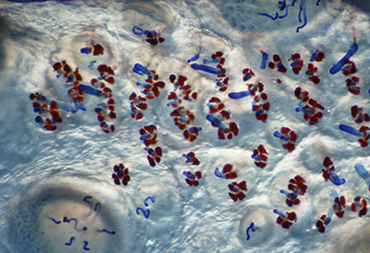
Move a dry hand across a tabletop. “It slides easily,” Kamberov observes. However, she notes, “If you have [sweat] on your hands, it’ll start to suction.” Just like wetting a suction cup helps it to stick onto the wall inside your shower, a little water (or sweat) helps hands and feet grip.
Humans have far more eccrine glands, and in many more places, than do most mammals. Scientists suspect that our sweatiness has gone along with our hairlessness, Kamberov says. The less hair you have, the more skin space there is for sweat glands. And bare skin means that sweat can evaporate and cool better than if the water gets trapped by fur.
Kamberov wants to know how humans ended up with hair instead of fur and oh-so-many sweat glands. To find out, she compared skin from humans, chimpanzees and a type of monkey called the rhesus macaque (REE-sus Muh-KACK).
Not many people would willingly donate skin for science. So Kamberov worked with cadavers — human corpses. That was actually the easiest part. She also worked with a monkey colony at Harvard University in Cambridge, Mass., to get samples from those animals. But she had to be patient, waiting for animals to grow old and pass on. “Every time a monkey died, we’d get an email and a package in the mail,” she recalls. Chimps were even more difficult. In the end, Kamberov got those samples from specimens that had been stuffed and preserved for museums.
Samples in hand, Kamberov carefully scanned each skin, counting hair follicles and sweat glands. It turns out that people are still quite hairy, even if we don’t look like it. “We’ve lost fur, but we haven’t lost hair,” Kamberov explains. “We have as many follicles as a chimpanzee.” It’s just that the follicles are tiny.
Tiny follicles produce much finer hairs, and this leaves more skin surface on which sweat can spread out. “Now you can sweat and evaporate very efficiently,” she says. “It makes sense,” Kamberov explains, “if you’re going to adopt [sweating] to cool off as opposed to panting.” Her team published its findings on November 7, 2018, in the Journal of Human Evolution.
Long ago, our bodies took up perspiration as a damp, but useful tool. Now, science is finding new uses for our sweat.
Sweaty sensors
Sweat glands suck. Literally. Sweat comes from the water that’s in and between your tissues, Kamberov explains. When the glands become active, they pull that interstitial (In-tur-STIH-shul) fluid from between the tissues into the gland. That includes drawing up fluid from the tiny blood vessels running near your skin.
All of that fluid enters the sweat glands. And it includes far more than water. There are salts, of course. But this fluid also can include any other small chemicals that had been in the blood and tissues. Once in the sweat gland, this liquid triggers tiny pumps. They pull out much of the salt. But some remains behind. So will some share of the other chemicals. All of these now get ejected out of the skin along with the sweat.

For Wei Gao, sweat is just the messenger. It’s those extra chemicals that interest him. Gao is a medical engineer — someone who designs and develops solutions for medical problems. He works at the California Institute of Technology in Pasadena.
Gao is hoping to use sweat to help people receive medical care tailored to their needs. It’s a concept known as personalized medicine. He’s especially driven to find when people become sick — long before they may feel the first symptom.
“I grew up in a small town in China,” he says. There, many people “didn’t realize they were sick until it was too late,” Gao notes. After his grandmother had a stroke, it took him a while to get home. By the time he did, he recalls, “She didn’t remember me.” If his family had known she was at risk for a stroke, he says, they might have been able to help her.
Geo now develops devices, called sensors, that pick up data from the body. He’s currently working on a wristband that can sense chemicals in sweat. Today, when doctors study people for signs of disease, they tend to analyze small samples of blood. But it’s hard to constantly monitor blood, Gao explains. Sweat, on the other hand? “It’s very common,” he says. “Every day we’re sweating.”
Gao’s current sensor needs 10 microliters — just a single drop of sweat. But unless someone is very, very warm, getting even that droplet may be a challenge. One way is to exercise until you break a sweat, he says. “But that’s not always good for patients.”
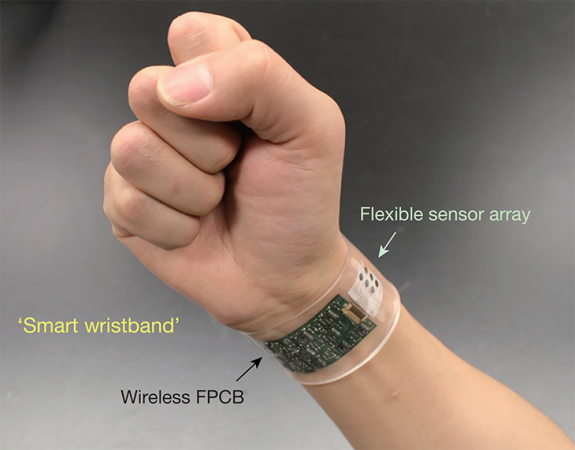
So Gao needs to make someone sweat. He and his colleagues do this using a method called iontophoresis (Eye-ON-tow-for-EE-sis). It applies a small electrical current to the skin. At first, you might feel an annoying sort of tingle. But “after a few seconds,” Gao notes, “you don’t feel anything because the current is so small.” (He knows. He tried it.)
The current induces the skin to take up a small amount of a drug called pilocarpine, which stimulates the sweat glands. The result: A quick droplet of sweat. Gao and his colleagues published their technique two years ago in the Proceedings of the National Academy of Sciences.
Once Gao gets that precious drop of sweat, sensors and a circuit board in a flexible wristband go to work. They monitor everything from body temperature to how much sugar is in the sweat.
The sensor isn’t yet accurate enough to use on sick patients, Gao says. But his team will continue to refine the sensor to detect the secrets in sweat. And some of those secrets might one day help catch killers — even if the victims aren’t alive to tell the tale.
Sweat sleuthing
Find a fingerprint on your smartphone screen and you might think it’s dirt or old skin cells. In fact, it’s mostly sweat. “When you take a fingerprint, you can see the swirls and little … dots in the swirl.” Kamberov says. Each dot is a sweat gland hanging out on the tip of your finger. Detectives in TV shows and movies dust for those fingerprints to find a killer. But the fingerprints of victims have tales to tell, too. Tales from their sweat.

David Russell is a chemist at the University of East Anglia in England. During one investigation, police asked him if it was possible to find out if the deceased had been poisoned. Russell had been working on a handheld device to detect drugs in fingerprints — including residues of drugs that could kill someone.
At that point, he’d only tested the device on warm, living hands, not on the dead. But Russell had already figured out that fingerprints were filled with clues.
“In the sweat of a fingerprint we can detect drugs and [their] metabolites,” which are breakdown products. When someone takes in any drug — from a painkiller for a headache to an addictive drug such as cocaine — the body breaks the chemical down into pieces, he explains. Most of those pieces come out when the person pees. That’s why officials analyze the urine when testing athletes for drug use. But some of those breakdown products also show up in blood. And if it’s in the blood, Russell knew, it could also end up in sweat.
Normally, when scientists want to check a sweat sample for drug metabolites, they have to take it to a lab. Russell tried another way. He built a small cartridge that takes the sweat from a single fingerprint. Inside the cartridge are antibodies — small chemicals that bind onto specific drug parts. If they don’t bind to a drug, they bind to a green glowing chemical instead. A lot of glowing green means very little drug is present. Very little color means the fingerprint is full of drug residues. This technique is called immunofluorescence (Im-MYOO-no-flor-ESS-ens).
Investigators wanted Russell’s team to find out if this test could detect drug-breakdown products in dead people. Do corpses have enough sweat left in their fingerprints for this to work?
To find out, Russell recruited some dead volunteers.
He handed out cartridges to three coroners in different English cities. (Coroners are officials who investigate deaths that happened under suspicious circumstances.) Those coroners asked the families of 75 people who had recently died if they could take fingerprints from the deceased.
With living people, Russell says, the sample is simple. “Wash your hands, sit for 15 minutes and then give a fingerprint sample,” he says. “We’re sweating right now, you and me.” It’s not much. Just enough sweat for a fingerprint. Still, that’s all Russell needed.
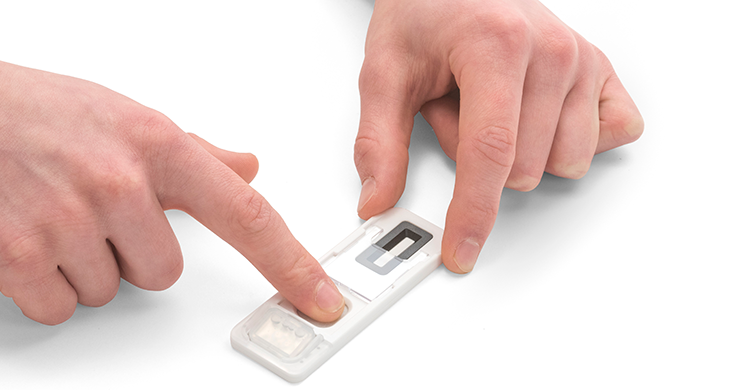
When the hand giving the fingerprint is dead, though, hand washing is off the table. A dead hand is not going to give Russell new sweat. So it wasn’t clear whether the fingerprint test would work.
In fact, it did. The dead bodies all had just enough sweat left to leave a fingerprint. And those fingerprints contained the remains of drugs that the people had been using at the time of their death, including addictive drugs such as morphine and cocaine.
When Russell compared the results of these fingerprints to blood samples taken from the cadavers, he found that his test matched the blood sample more than 88 percent of the time. And while analyzing blood and urine may take hours, Russell’s method takes just 10 minutes. He and his colleagues published their results in the October 2018 Journal of Analytical Toxicology.
Currently, Russell’s test can only test for four types of drugs — cocaine, marijuana, amphetamines (Am-FET-ah-meens), and opiates (OH-pee-uhtz), such as morphine. But Russell plans to add more drugs, such as alcohol, to the test. He also has a company that sells the cartridges so that others can test the fingerprints of both the living and the dead.
People might be embarrassed when they sweat, but really, they should marvel at all that sweat glands can do for us and how much information they can share. “The sweat gland is so underappreciated,” Kamberov says. Our species has taken sweating to extremes, using it to cool ourselves. In a way, our sweat is super. And, she adds: “Sweating makes you human.”
